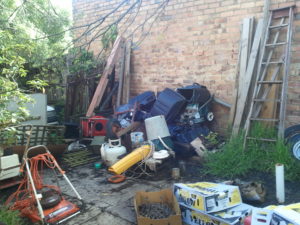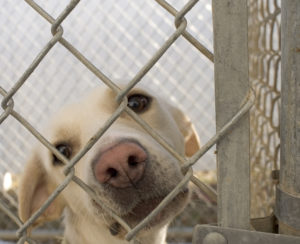Seven Ways to Help Out in an Animal Hoarding Situation

Animal hoarding is a serious situation that can put animals and their owners at risk for disease, unsanitary living conditions, heartache, and even death. This type of hoarding happens when a person takes on, adopts, and tries to take care of too many animals. Hoarders usually see nothing wrong with their actions and think that they are helping animals or they may suffer from underlying mental illnesses. In reality, intentional or not, animal hoarding is a form of animal abuse and in some states is a punishable offence.
Here are some steps you can take to spot and help hoarding situations
1. Is the owners home overrun or run-down?
One of the tell-tale signs of an animal hoarding situation is the look of the house. If it seems like the home is in poor condition on the outside (i.e. filthy windows or outside features, junk and garbage in the backyard, an unkempt lawn), chances are the inside is just as bad. You may even smell a strong odor of urine or feces from just standing outside of the home.
If there are animals in and out of the home, seemingly on free will, that may also be a good indication of animal hoarding. Some window panes may be knocked out or holes in the walls may let animals easily in and out. Dogs and cats may freely pass in and out of the home and if you notice that it seems like a different dog or cat each time, chances are it is a hoarding situation.
2. Do they have visitors or seem isolated?
Hoarders usually try to keep their hoarding to themselves and may become isolated. Being neighborly may or may not be a thing. Inviting yourself into someone’s home is never a good idea or polite to do, but if you happen to notice that no one really comes in and out of the house, including the owner, it may be a red flag. Keep in mind that there is a difference between minding one’s own business and being reclusive or secretive.
3. Call the right people.
You may come to the decision that the residence in question is most likely a hoarding situation. Who do you call? The ASPCA recommends calling “local humane law enforcement department, police, animal welfare organization, or veterinarian.” All these people and organizations are specifically equipped to deal with the various steps of dealing with hoarding situations. Never take it upon yourself to confront the person or persons in question. Always seek help.
4. Get the person help.
Not every animal hoarder will want help. But calling the right authorities is a great step towards helping them. Law enforcement and animal welfare organizations will know best how to confront the hoarder(s) about the touchy subject of getting help. You may feel bad at first, but hoarding can be a sign of underlying mental illness and the person may be exhibiting these behaviors for help. Regardless if the person who was hoarding the animals wants help, the removal of the animals is they’re and the animals first step towards recovery.
5. Don’t be confrontational or judgmental.
Pointing fingers and passing judgement is a very easy way to deal with your outrage towards the situation. Animal abuse is not to be taken lightly, but you should also try to remember even if the hoarding situation is ghastly, that the hoarder is a person too. The ADAA, or the Anxiety and Depression Association of America, has articles that are helpful when trying to comprehend how animal and object hoarding usually happens. The old saying “put yourself in someone else’s shoes” may seem hard to do when it comes to animal abuse, but traumatic experiences, mental illness, and feeling alone usually trigger animal hoarding.
Hoarders of any kind can easily fall back into their ways. If you suspect that the hoarder has regressed back to their hoarding ways, call authorities. They will investigate and take the appropriate actions. Never confront the hoarder. Always seek help.
7. Adopt!
One of the ways that you can help animals that have been affected by hoarding is adoption. The Humane Society cites that there are “250,000 animals each year affected by animal hoarding.” If you can provide a safe, healthy, and loving home for an animal in need, there are many animals that are up for adoption.
Have you ever encountered an animal hoarding situation? Leave a comment and let us know!

